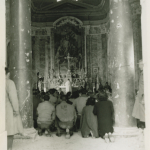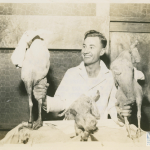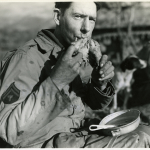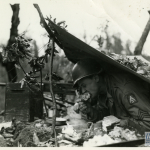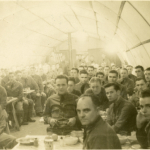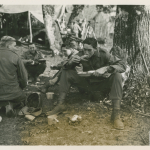Posts Tagged ‘Thanksgiving’


Home Front Friday is a regular series that highlights the can do spirit on the Home Front during World War II and illustrates how that spirit is still alive today!
We’d like to remind you all of the “Franksgiving” controversy that existed between 1939 and 1942. In 1939, after being pressured by retail executives, President Franklin D. Roosevelt signed an executive order that changed the date of Thanksgiving from the last Thursday in November to the third Thursday in November.
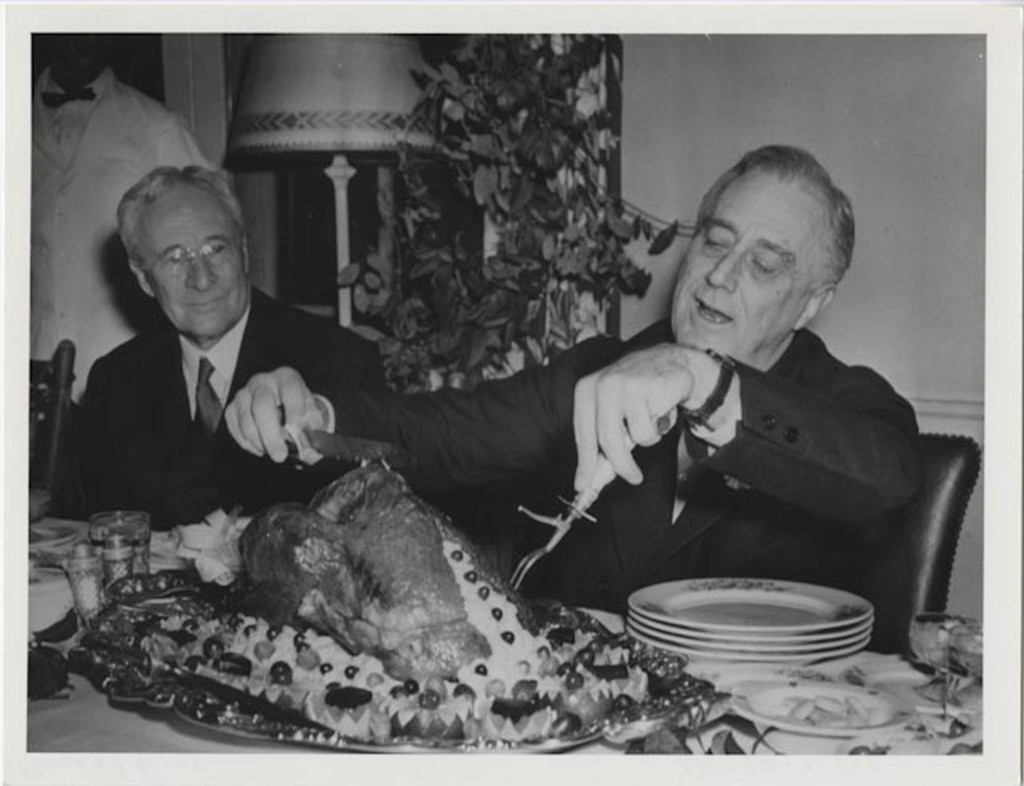
President Roosevelt Carving a Turkey on Thanksgiving, 1933. Retrieved from: The National Archives Catalog.
The retail executives that pushed President Roosevelt to change Thanksgiving sought to increase revenue during the Holiday season. In 1939, Thanksgiving, if scheduled as the last Thursday of November, would have been the 30th. That would have left less than 30 shopping days before Christmas. Roosevelt agreed with the retail executives that 24 shopping days was not enough time, claiming his decision to sign an executive order, was to benefit the economy.
This decision caused uproar, for a variety of different reasons, among various different parties. The press, Republicans, and football fans alike all agreed that changing the date of Thanksgiving was kind of crazy. FDR’s former opponent, Alf London, said Roosevelt acted “with the omnipotence of a Hitler,” comparing him to the leader of the Third Reich.
Less than half of the states in the Union abided by Roosevelt’s executive order that year. In fact, several states, including Colorado, and Texas. After an early Thanksgiving in 1941 (November 20th), Roosevelt opted to change the date back to the fourth Thursday in November, not the final Thursday. The joint-resolution between Roosevelt and Congress stated that Thanksgiving cannot fall on November’s last two days—which is why Thanksgiving is traditionally between November 22 and 28th.
Posted by Catherine Perrone, Education Intern and Lauren Handley, Assistant Director of Education for Public Programs at The National WWII Museum.



Seventy years ago, on 30 November 1944, the “Kriegies”– short for Kriegsgefangener, German for POW– in Stalag Luft IV celebrated Thanksgiving. They used the traditional date of the 30th of November (for more on this see the previous post on “Franksgiving”). Naturally, this issue of Kriegie Kronikle spotlighted the work of the “Chow Chuckers,” the men who “perform the tasks which are inevitable & necessary in unpacking, sorting, repacking & loading of the chow we all idolize (the word is a masterpiece of understatement!).”
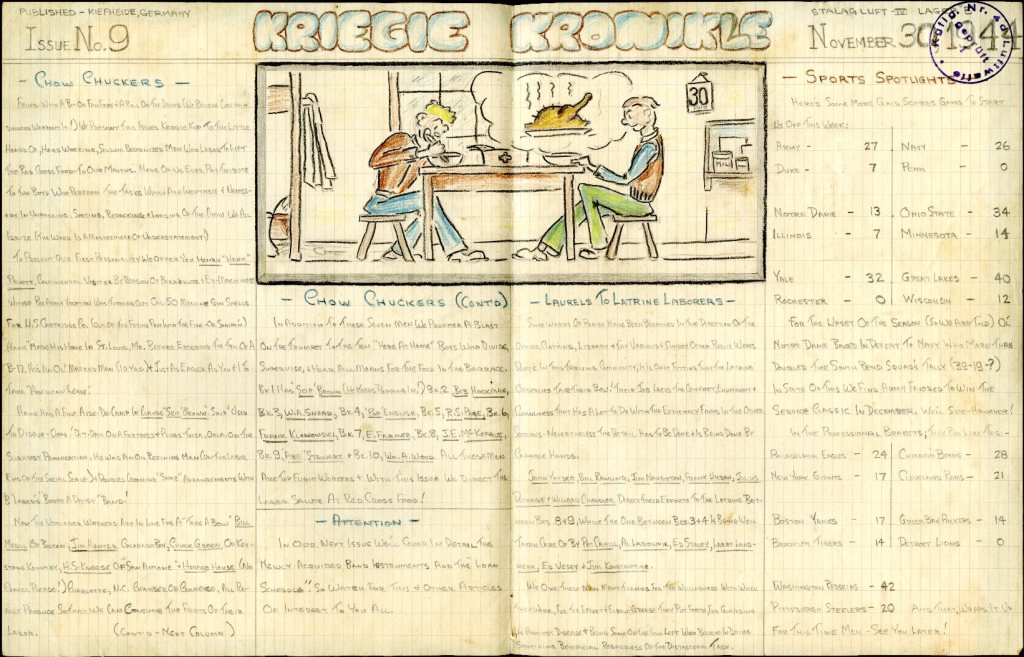
Gift of the Family of Willard Charles Miller, 2012.388
For more on the Kriegie Kronikle from Stalag Luft IV, see this previous post.
Post by Curator Kimberly Guise.



Home Front Friday is a regular series that highlights the can do spirit on the Home Front during World War II and illustrates how that spirit is still alive today!
Thanksgiving is an American holiday cherished now and during the 1940s. On the battle front, the decision was made to provide a turkey dinner for all troops in the ETO for Thanksgiving in 1944. To do this, the fresh meat ration had to be cut. It was estimated that a holiday-sized portion equaled three normal meat meals, and poultry took up even more space. Nevertheless, the commitment to provide turkey to all the troops on the Continent had been made in September. The general opinion was that, irrespective of the morale value of a holiday meal, failure to meet a widely publicized commitment would have a very unfavorable effect. By Thanksgiving, fresh fruit, vegetables and over 1.6 tons of turkey had been distributed to troops. The trucks of the mobile bakery companies also helped get the meal out. Some of the combat troops did not receive the special ration until one or two days after Thanksgiving, but it was generally considered a notable feat of distribution under great difficulties.
For more images of Thanksgiving during wartime look in the Museum’s Digital Collection.
On the Home Front, Thanksgiving was a tradition worth preserving, even during times of rationing. Many magazines and pamphlets encouraged making pies with molasses, stretching meat rations, and doing other things to create a feast while the nation was at war. In 1943, Norman Rockwell’s famous photo of a bountiful Thanksgiving representing one of the Four Freedoms was released. For Freedom of Want he took pictures from his own family’s Thanksgiving. Rockwell’s mom actually made the painting. The woman placing the turkey is the Rockwell family’s cook, Mrs. Thaddeus. He later thought that the painting flaunted over abundance.
Today, there is no rationing and no substitutions necessary, except if you desire to, but the enduring image of a family gathered and excited over a huge turkey is still etched in all of our minds. Enjoy your feasts wherever you are!
Posted by Lauren Handley, Assistant Director of Education for Public Programs at The National WWII Museum.



Seventy years ago today, on 6 March 1943, Norman Rockwell’s painting Freedom from Want appeared in the Saturday Evening Post. The third in his series on The Four Freedoms featured a family sitting down to a plentiful Thanksgiving meal. It would become one of Rockwell’s most popular images.
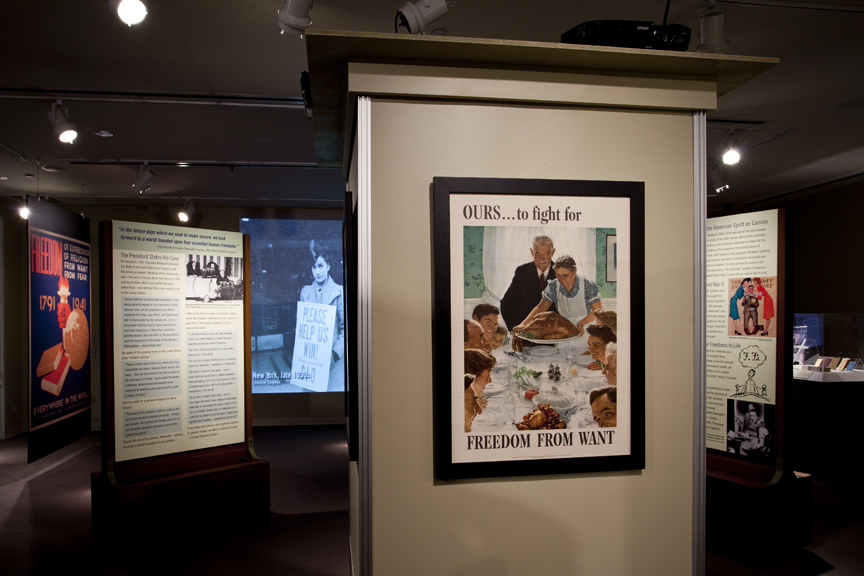
Rockwell’s Freedom from Want as seen in the Museum’s exhibition presented from September-November 2011, Roosevelt, Rockwell and the Four Freedoms: America’s Slow March from Isolation to Action.
Post by Curator Kimberly Guise



Seventy years ago, on Thanksgiving Day, 26 November 1942, one of the most popular films of all-time, Casablanca premiered at the Hollywood Theater in New York City. Initially scheduled for release in June 1943, the premiere was hastily moved up to capitalize on publicity gained by the Allied landings in North Africa and eventual capture of Casablanca in November. The nationwide release wouldn’t be until 23 January, during the Casablanca Conference. Demonstrating the popularity and power of the film, Roosevelt’s Headquarters during the conference was referred to in code as “Rick’s Place.”
The classic film, which features a number of exiled and refugee European actors and crew, is in essence an anti-fascist propaganda piece in which Casablanca is portrayed as a waiting room for the safe haven of American shores. Casablanca exemplifies themes of romance, intrigue, internationalism, and ambiguity of character. As the 1942 trailer declares, the film is the “saga of six desperate people, each in Casablanca to keep an appointment with destiny.”
Post by Curator Kimberly Guise.



In the years 1939-1941, at the behest of President Franklin Roosevelt upon urging from retailers, Thanksgiving was celebrated a week earlier, on the third Thursday in November rather than the fourth. As a result, some referred to the earlier celebration not as Thanksgiving, but as Franksgiving. The week change was intended as an economic stimulus measure that would create a longer Christmas shopping season and increase retail in the time of the Great Depression. Some states refused the change and celebrated at the usual time, while a few states celebrated both dates.
For the first Thanksgiving during WWII, in 1942, Roosevelt returned the holiday to its traditional week. The hit 1942 film, Holiday Inn, remarked on the confusion surrounding the date of that year’s Thanksgiving—even the turkey is confused. Happy Thanksgiving!
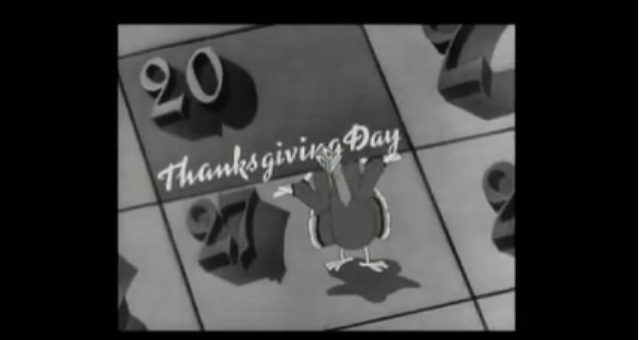
Click here to watch the Thanksgiving scene from Holiday Inn.
Post by Curator Kimberly Guise.



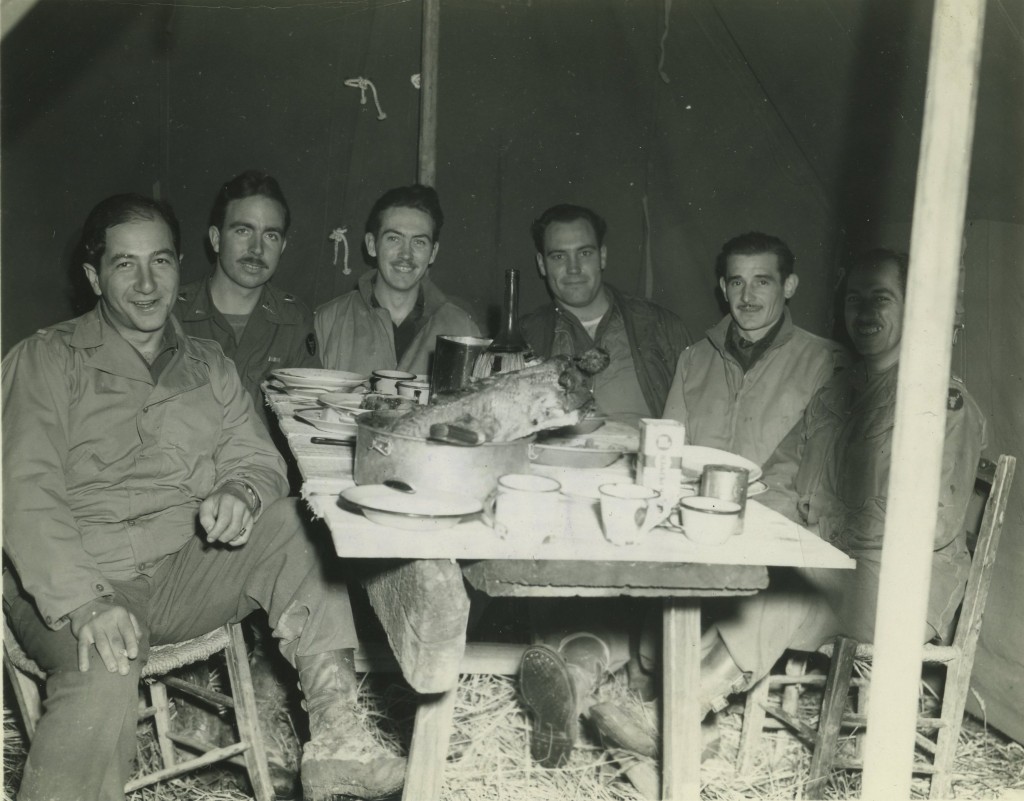
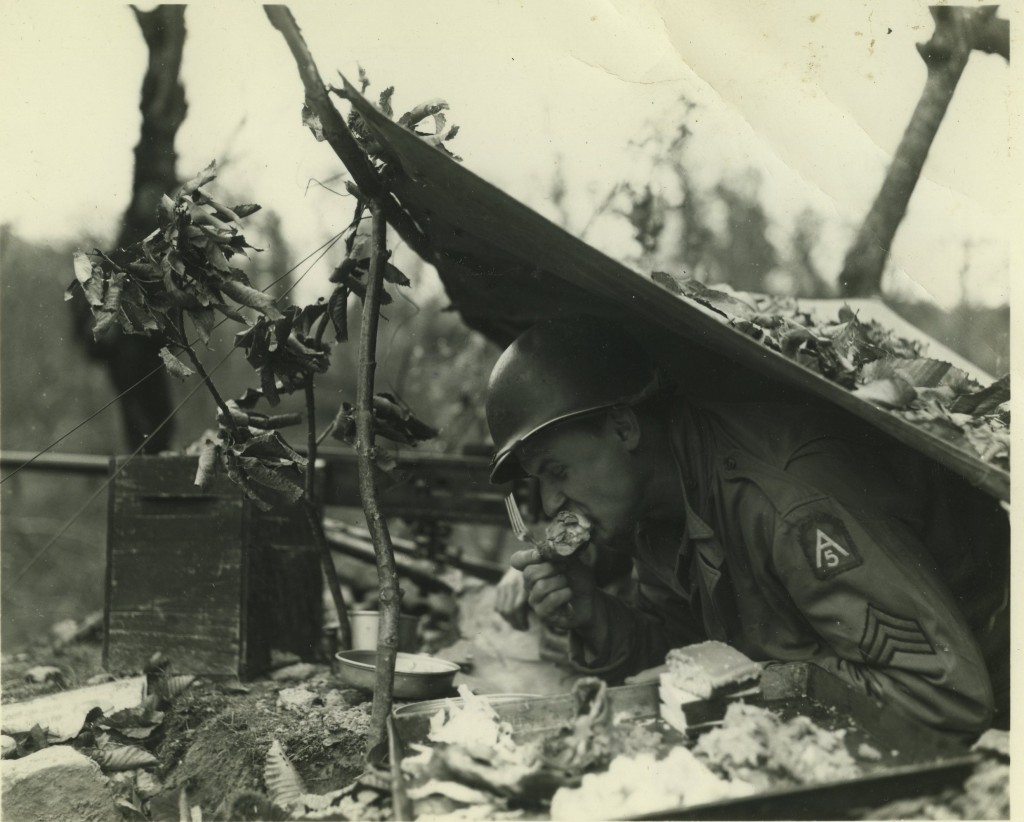
(more…)




On November 23, 1945, the wartime rationing of most foods ended. Ask anyone who remembers life on the Home Front during WWII about their strongest memories and chances are they will tell you about rationing. In addition to shortages of rubber, metal, clothing, and other materials, there were shortages of various types of food that effected just about everyone on a daily basis.
Food was in short supply for a variety of reasons: much of the processed and canned foods was reserved for shipping overseas to our military and our Allies; transportation of fresh foods was limited due to gasoline and tire rationing and the priority of transporting soldiers and war supplies instead of food; imported foods, like coffee and sugar, was limited due to restrictions on importing.
Holidays like Thanksgiving were quite different during wartime on the Home Front. Many families missed parents and siblings who were overseas fighting. Items like your Thanksgiving turkey would be nearly impossible to find. Even a tradition as simple as a football game was suspended; the Detroit Lions, who have hosted an annual Thanksgiving game since 1934, put this tradition on hold between 1939-1944.
This Thanksgiving, when you think about what you are thankful for, consider the soldiers and families that have sacrificed and continue to sacrifice for the war effort. How do you think they celebrated, given the challenges they faced?
Learn more about Rationing in our Take a Closer Look Gallery
Teachers, download primary sources to teach about Rationing in WWII!
Read all of our blog posts related to rationing.
Posted by Gemma Birnbaum, Digital Education Coordinator at The National WWII Museum.






